

 TERRY SMITH takes a walk along this disused railway line.
TERRY SMITH takes a walk along this disused railway line.
On a crisp spring Sunday morning, my family had visited the East Sussex County Town of Lewes. Heading north by car we saw a sign for Barcombe Mills and as I had not been there for at least 40 years I decided to call in. The Mills are, in fact, small manmade lakes with weirs and sluices that control the flow of the River Ouse through to Lewes and it is quite pretty there. The Ouse is a river in the counties of West and East Sussex. It rises near Lower Beeding in West Sussex and flows eastwards and then southwards to reach the sea at Newhaven. It skirts Haywards Heath and passes through Lewes, where it is used in the brewing of Harveys ales.
As we headed north along the eastern bank of the Ouse, we spotted a rusty derelict bridge crossing the river ahead. Climbing up the bank to see what it was, it became obvious that this was once a twin track railway bridge. Looking north along the embankment, we could see the old track bed disappearing into the distance. Many of these disused lines have been opened up as paths for ramblers or cyclists, but not this one, it seems.
As we walked the line north you could spot another smaller bridge, which I would assume was to allow livestock or farm vehicles to be moved under the railway. I had not gone out to find remnants of an old disused railway, but what we had found was part of the Lewes to Uckfield line. At Uckfield, now a terminus, the line resumes current day operation serving trains to London. However, the part that we had found was closed during the 1960s. It was not one of the lines culled by Dr Beeching though, but it eventually closed in 1969. The penny soon dropped with me which part of the line we were on as there is still a station building, now a private residence at Barcombe Mills, and the preserved Lavender Line at Isfield is about a mile north of where we were. There was nothing much else apart from the bridges and the embankment to give away that a railway was ever there, no mile markers or level indicators. However, I did spot a rather rusty chair clip which I took home as a souvenir.
A bit of research shows that that British Rail tried to close the line sooner, but faced a lot of objection from both commuters and businesses who wanted to keep their own link to London without having to go to Brighton. Ironically, a new line following this route as a secondary line to London has been subject of debate for many years. Equally ironic was the excuse that the railway company used to close this section of the line back then, the fact that one of the bridges had become unsafe and not economical to replace. It was the bridge you see in these pictures over the River Ouse, which still stands today!
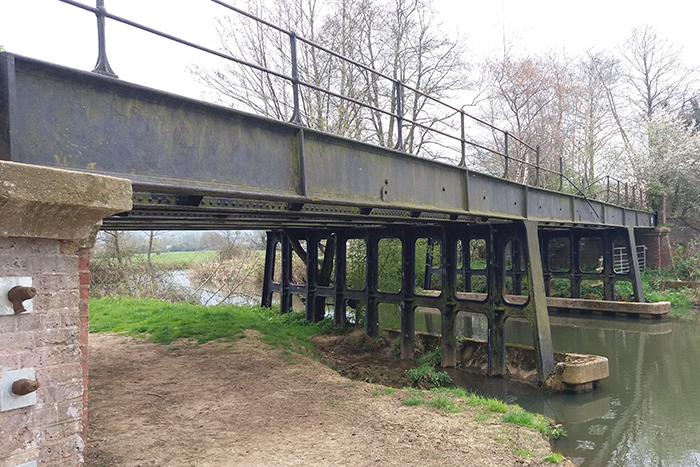
Could this be an old railway bridge over the river?
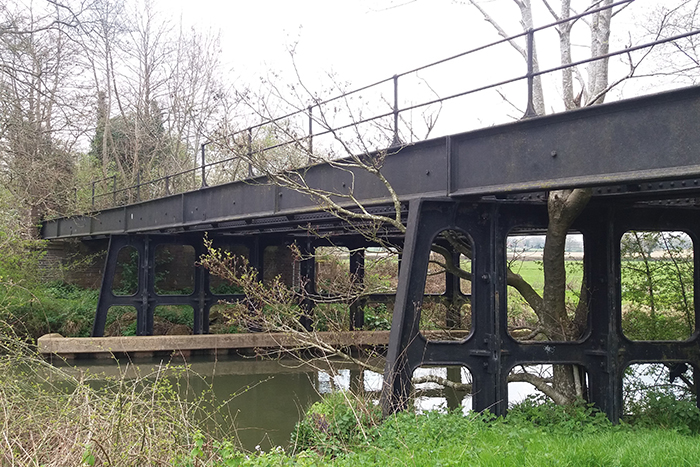
Yes it was, and it was in a pretty poor state too.
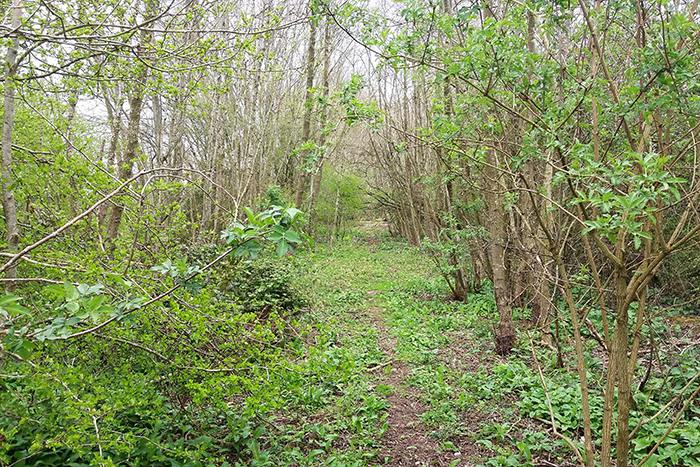
Looking North towards Isfield, the embankment is now mostly covered in trees.
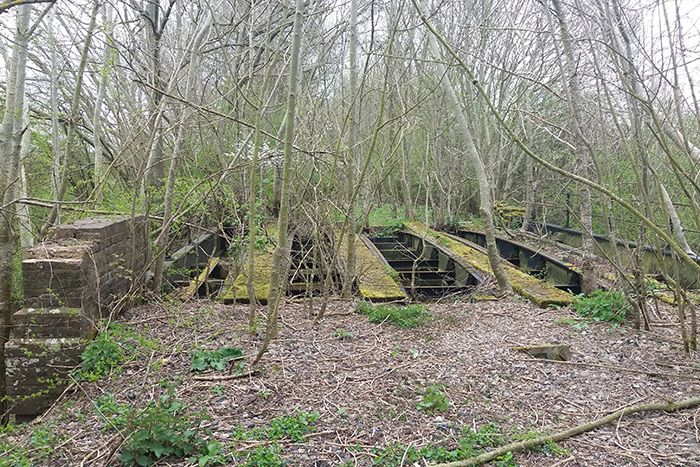
A much smaller bridge for farming use. It belies that this was once a twin track line.
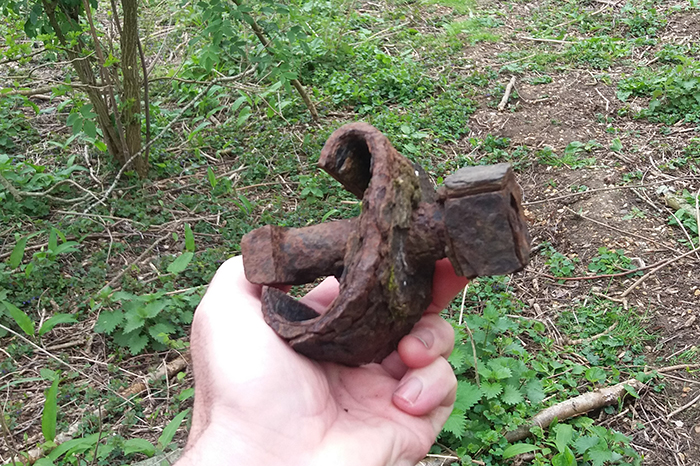
Nice little memento, and old chair clip.
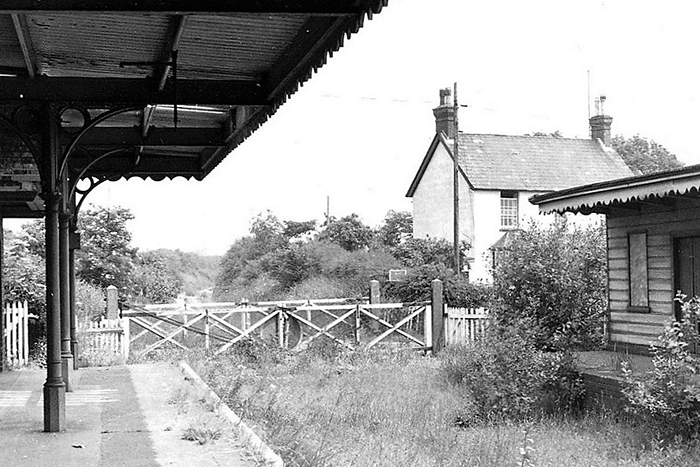
Barcombe Mills station in the early 1970s, this has now been turned into a private residence, however the crossing gates are still there. In this shot we are looking north and the bridge is about half a mile away.
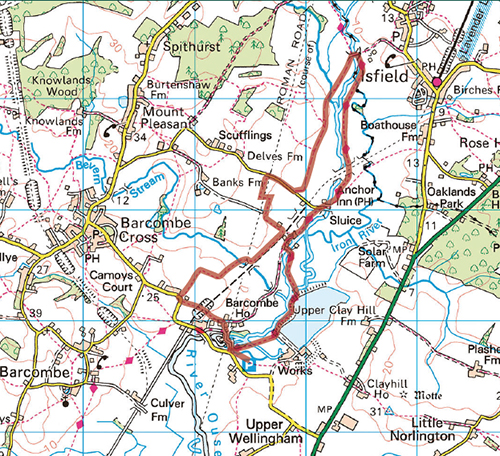
The bridge can be seen crossing the Ouse just above the words Anchor Inn, which looks to be a nice place to have Sunday lunch. The brown outline is a recommended walking route, notice the unconnected disused railway to the left. This branched away at Culver Junction, now a farm and heads towards another preserved line, the Bluebell Railway at Sheffield Park.